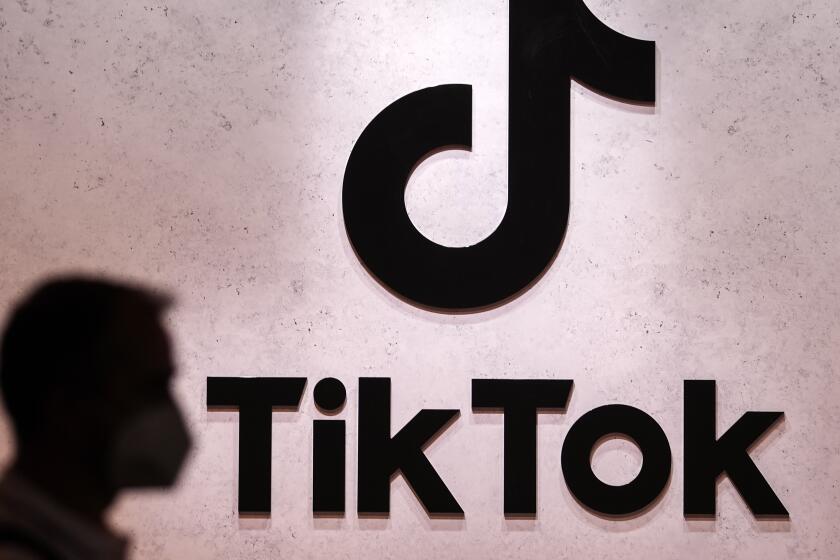Businesses Hopeful on Blackout Warnings
Frustrated at being left in the dark about rolling blackouts, California business leaders expressed optimism Friday that a proposed early warning system will help minimize the economic damage of power outages on the state’s industries.
Gov. Gray Davis ordered state officials Thursday to begin warning residents and businesses of likely power outages up to two days in advance when power supplies appear scarce. Given the fluid nature of the state’s electricity grid, which can see its supplies swing from abundant to inadequate in a matter of minutes, some of those predictions could prove about as useful as a weather report six months in advance.
But business advocates say any information is better than no information when it comes to avoiding outages.
“Businesspeople are accustomed to assessing risk,” said Jack Stewart, president of the California Manufacturers and Technology Assn. “We need to give them the best available information, as far ahead as possible, and let them make their own decisions.”
Under Davis’ order, blackouts will be issued under a three-tiered system beginning with a forecast 48 hours in advance of a projected electricity shortfall.
General geographic areas to be blacked out will be identified in warnings issued 24 hours before likely outages. Precise locations will be announced an hour before the power is cut.
Details are still being worked out, but the idea is to use data such as weather patterns and scheduled power plant shutdowns to make the longer-range projections. Information about communities and specific block numbers to be interrupted will be provided closer to the projected outages, as real-time usage and supply information becomes available to the grid operator.
Plans call for notifying electricity customers through a variety of means, including the news media, the California Independent System Operator (Cal-ISO), utility Web sites and a proactive system being developed by Cal-ISO to phone, page, fax or e-mail individual power users. Agency officials say they plan to implement the governor’s order by June 15.
Business interests have been beating the drum for early warning since the first rolling blackouts walloped companies last summer. Though residents might find it inconvenient to have their dishwashers turned off, a sudden outage can wreak havoc on a company if an assembly line freezes or a computer system crashes.
The stakes are enormous. A Silicon Valley business group estimated that a single blackout last June resulted in losses of $100 million for that region’s companies because of forfeited sales, squandered productivity, wasted wages and ruined products.
A study released this month by a California business consortium estimated that a projected 30-plus days of summer blackouts could cost state businesses $21.8 billion, reduce household income by $4.5 billion and result in 135,000 lost jobs.
Julie Puentes, a spokeswoman for the Orange County Business Council, said the governor’s plan is consistent with what businesses have been demanding. “If they can do this, companies will be able to use the backup generation that they’ve paid hundreds of thousands of dollars for,” she said. “They will be able to prevent chaos for their workers, and they’ll be able to maintain their business operations, which benefits the California economy.”
The president of Aluminum Precision Products in Santa Ana, which has four manufacturing plants in Orange County, was equally enthusiastic.
“You have no idea what help [the warnings] would be,” Philip S. Keeler said. “In our particular case, because of the heavy equipment, this could be the difference between life and death, and I’m very serious. It will help tremendously.”
Others are skeptical.
James Swartwout, chief executive of Torrance-based Summa Industries, said he’s not counting on the system to protect his molded plastics manufacturing company.
“How can they say with certainty that a blackout will occur?” Swartwout asked. “It’s my understanding that they have no real way of knowing until the very last minute. Eventually, we’ll get two or three warnings a week. I can’t promise we won’t start to ignore them.”
Indeed, while early warning sounds good in theory, implementing it is another story. The utilities long resisted such a system because they often get only a few minutes’ notice from Cal-ISO, which in turn often isn’t able to project a shortfall with absolute certainty until it is almost upon them.
One of the big concerns with early warning is that it simply won’t be accurate. Cal-ISO board member Mike Florio, a consumer advocate, said he worries about crying wolf.
“After the third or fourth or 10th time,” Florio said, “people start to say, ‘They’re always calling these things, and nothing ever happens.’ ”
But board member Carl Guardino, who also is head of the Silicon Valley Manufacturing Group, sees that as a strength rather than a weakness of the program.
He said early warning will prompt businesses to redouble their conservation efforts, which could help stave off many of the projected blackouts.
“That’s not crying wolf; that’s popping the champagne,” Guardino said. “Preventing blackouts from happening in the first place is precisely what we want.”
*
Times staff writers Sarah Hale, Leslie Earnest and Nancy Vogel contributed to this report.






